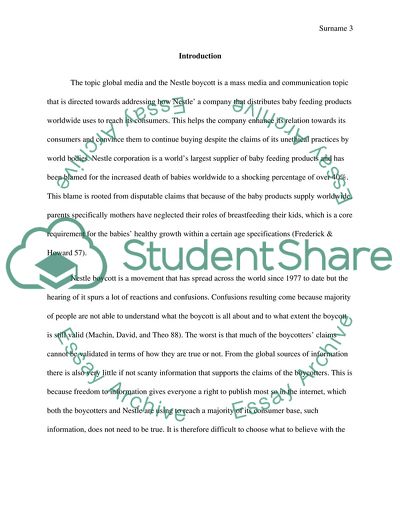Cite this document
(Global Media and the Nestle Boycott Case Study Example | Topics and Well Written Essays - 2250 words - 1, n.d.)
Global Media and the Nestle Boycott Case Study Example | Topics and Well Written Essays - 2250 words - 1. https://studentshare.org/media/1784906-global-media-and-the-nestle-boycott
Global Media and the Nestle Boycott Case Study Example | Topics and Well Written Essays - 2250 words - 1. https://studentshare.org/media/1784906-global-media-and-the-nestle-boycott
(Global Media and the Nestle Boycott Case Study Example | Topics and Well Written Essays - 2250 Words - 1)
Global Media and the Nestle Boycott Case Study Example | Topics and Well Written Essays - 2250 Words - 1. https://studentshare.org/media/1784906-global-media-and-the-nestle-boycott.
Global Media and the Nestle Boycott Case Study Example | Topics and Well Written Essays - 2250 Words - 1. https://studentshare.org/media/1784906-global-media-and-the-nestle-boycott.
“Global Media and the Nestle Boycott Case Study Example | Topics and Well Written Essays - 2250 Words - 1”. https://studentshare.org/media/1784906-global-media-and-the-nestle-boycott.


